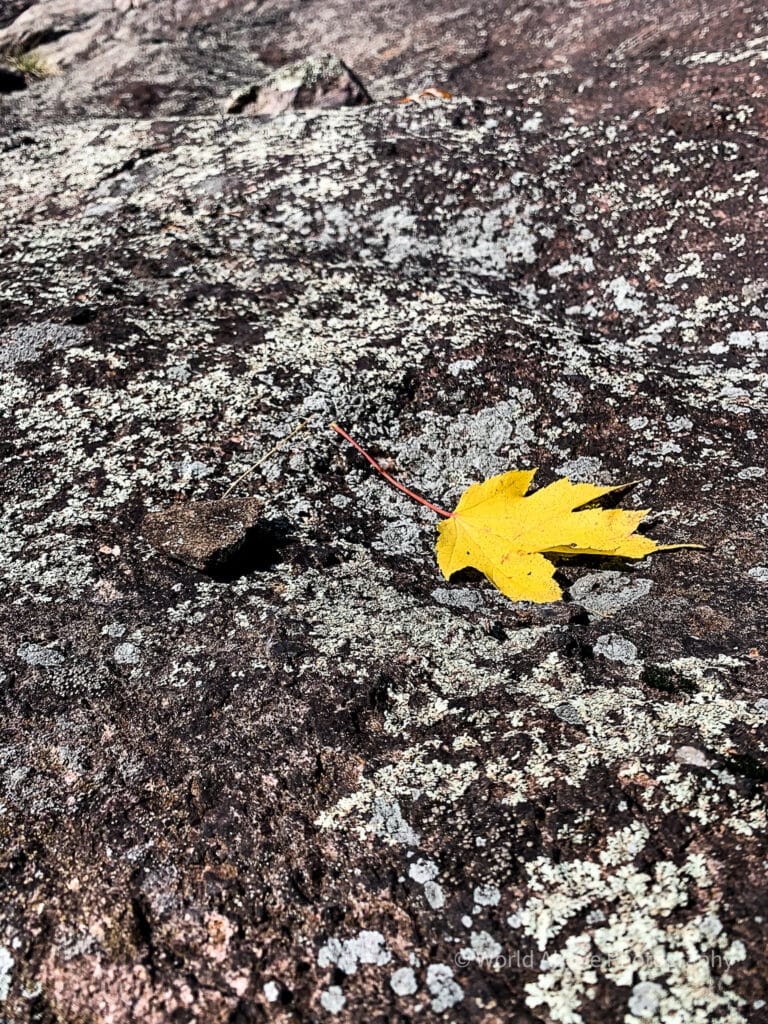History
Park History
If you visit Frontenac Park, you may see signs of previous habitation along the trails. In fact there were over 15 homesteads within the border of what is today Frontenac Park.
Author Chris Barber spent more than ten years researching this rich heritage. The result is a book published by Quarry Press in 1997 called “Their Enduring Spirit: The History of Frontenac Provincial Park 1783-1990”.
This book is available at the Park office.

Another Day, Another Dollar
1905 – early in the morning Tom Gorsline, the foreman at the Tett mine, is checking the steam piping as a worker starts a wood fire in the boiler that will provide the steam that runs the drill and the water pumps. Another mining day is beginning. The miners had been following a vein of amber mica (phlogopite) since 1899 – the main pit now plunged close to 80 feet into the rocks and water sometimes was a problem. Fortunately, the price for mica is on the rise again and the main vein is still good – in the area, it was normal for mica veins to suddenly narrow to nothing without warning. Twelve workers are at the mine that morning.
The hand drillers are already at work. Their job is to make holes in the rock to receive the explosives. The drillers are working in teams of two using a method called “double-jacking”. One person, the holder, manually holds a steel drill against the rock. The other, the striker, swings an eight-pound sledgehammer hitting the end of the drill. In between the blow, the holder twists the drill to loosen the rock chips so it does not get stuck in the rock. Then the next blow comes with a sharp clank when steel meets steel. They are drilling at a rate of 1.5 to 2 feet per hour. After a half-hour, the holder and striker exchange places so the striker can have a rest. As you can imagine, accuracy is crucial. If the striker misses, the holder could be maimed for life. This is dangerous enough when they are drilling on the floor of the mine, but often the veins are at the roof of a drift or on the wall of the pit.
As soon as the steam from the boiler reaches the right pressure, a miner starts the steam drill. It is faster and easier than hand drilling but the steam drill is enormous, unreliable and unwieldy because of connections with the steam pipes that come down from the surface. As a result, the steam driller is assigned fairly open spaces while the hand drillers work in tight quarters. Drilling is hard and dangerous – there are no hard hats, goggles, or electrical lights – but the dollar a day they are earning helps to feed their families.
Now that the holes are in place, Tom calls the blasters. They make sure the holes are dry otherwise the charges may not go off. They put the black powder in waterproof covers, attach a proper length fuse, and place it down in the hole. They pack the rest of the hole with clay. The length of the fuse is important or they could meet their maker faster than expected. After a few minutes, all charges are ready. The head blaster gives a signal to Tom Gorsline who orders all miners and equipment out of the mine. When all is clear, the blaster lights up the fuse and moves quickly out of the way. The explosion rumbles and the ground shakes.
After the smoke and dust settle, Tom sends in the muckers. They have a hazardous job. Everyone knew of George Amey, a mucker at the Birch Lake mine, who lost an eye when his pick hit a charge that did not fully explode. Some muckers sort the ore from the waste while others, with picks and shovels, load the waste rock in a large bucket until it is full. Then one of them yells: “BUCKET.” Upon hearing the signal, a man at the surface gets the horse moving on a circular track so that the winch can hoist the bucket up to the top. The bucket is dumped on the tailings pile. As soon as the muckers are finished clearing the debris from the last blast, the drillers begin to make new holes.
The Tetts are astute businessmen and they know that if the mica is separated from the rock locally, they would save on shipping costs. Cleaning the mica is the job of cobblers who work on the surface. Miners say that cobbling is a job for old men and young boys. Of course, they are the lowest paid mine workers. Some cobblers “thumb trim” the mica by the pit while others are working at the cleaning shop attached to the main mine building, “knife trimming” the mica to remove all traces of unwanted material. They store the clean mica in barrels.
In late afternoon, Benjamin Tett, one of the owners, appears on horseback. He is leading teams of horses and wagons. Tom meets him at the front of the mine office. Benjamin is coming to inspect the operations and to bring supplies. The next day, he will be taking back a shipment of mica down the Hardwood Bay Road to Perth Road then north to Bedford Mills. There, the mica will be loaded on the Tetts’ own tugs and shipped to a buyer in Ottawa via the Rideau Canal.
The sun is going down and the miners’ 10-hour day is over. The mine is quiet as some of the workers make their way home while others, not as lucky, walk to the boarding house. There, they will dine in silence on whatever the cook was able to put together and then later crawl into their bunk beds for a well-deserved and much needed rest. As they drift off, they look forward to another day’ and another dollar.
The Tett mine operated from 1899 until 1924. It produced 99 tons of mica for a value of $27,279.00. For a few months, it was the largest mica producer in Ontario.
Credits
“Small Scale Mining in the South Shield Region of Eastern Ontario” by Marilyn G. Miller), and “Their Enduring Spirit” by Chris Barber with Terry Fuchs.
